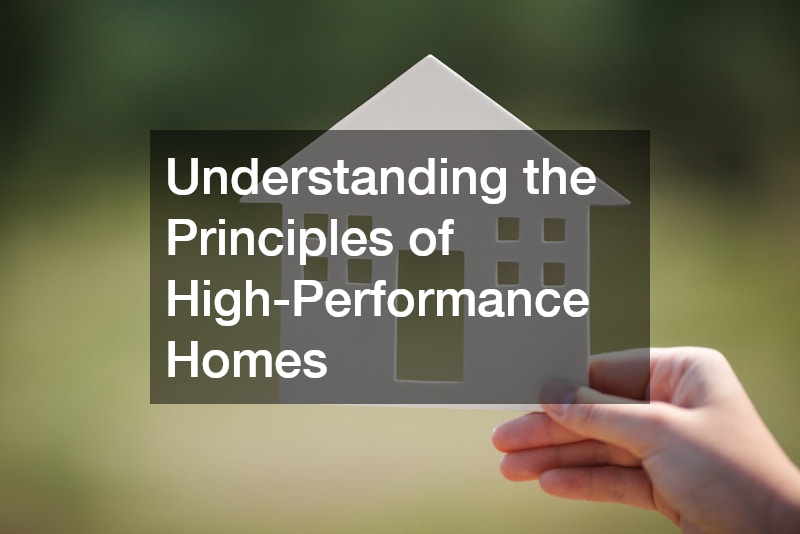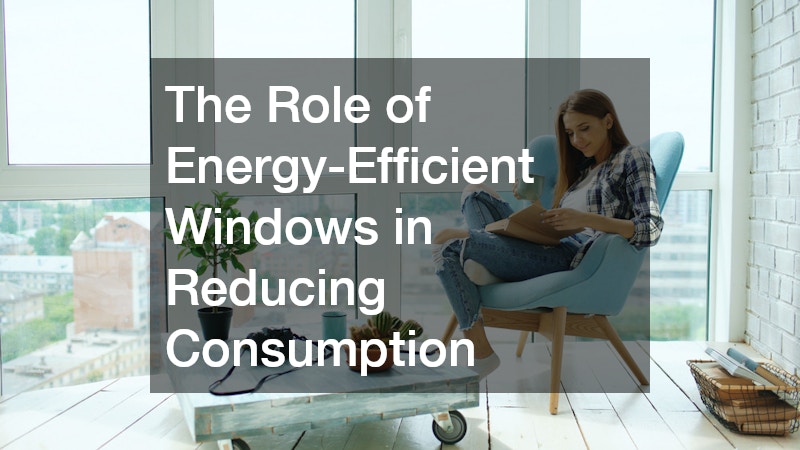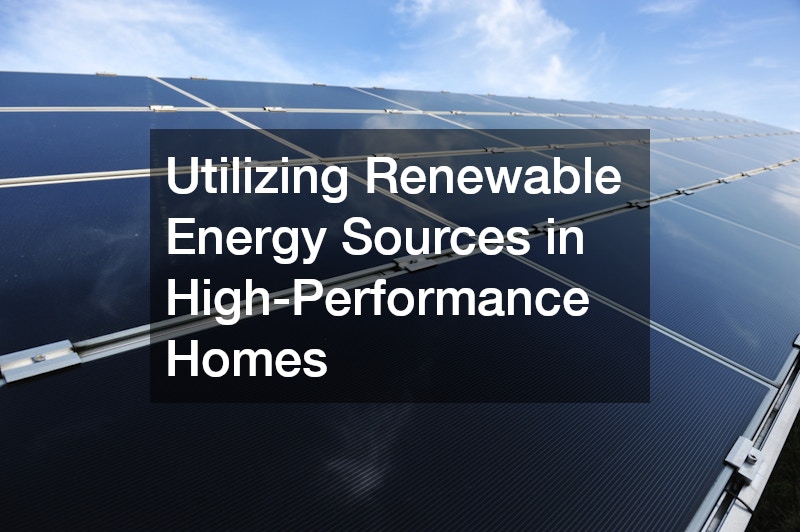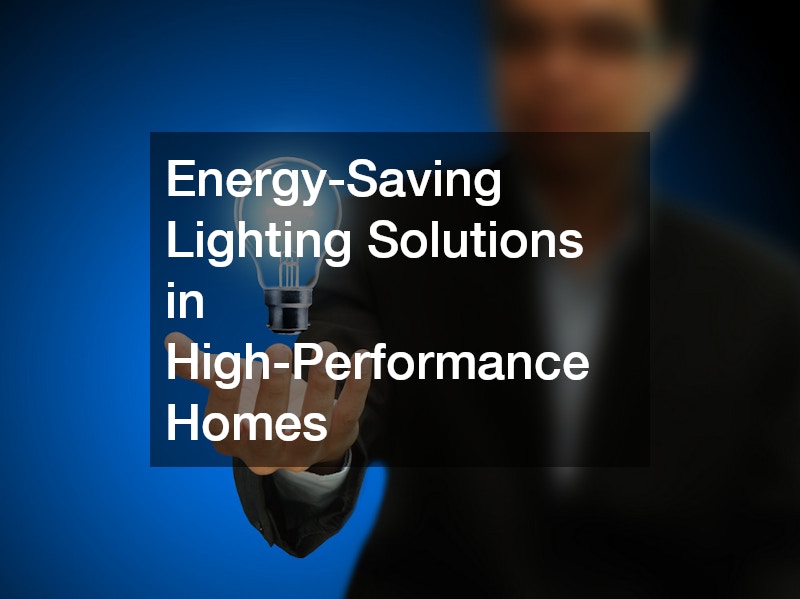Planning Your Home for Efficiency
A high-performance home is designed to maximize energy efficiency, comfort, and sustainability. These homes are constructed or retrofitted with advanced materials, technologies, and systems that work together to significantly reduce energy consumption while maintaining optimal indoor conditions. Unlike conventional homes, which may rely on outdated methods and materials, high-performance homes utilize modern solutions that align with today’s energy standards. The goal is not only to lower utility bills but also to create a more environmentally friendly living space that uses fewer natural resources. By integrating a combination of energy-efficient appliances, smart home technologies, and renewable energy sources, a high-performance home ensures a reduced carbon footprint and a healthier indoor environment for its occupants.

Understanding the Principles of High-Performance Homes
At the core of every high-performance home are a few key principles that guide its energy-efficient design. These homes are built with the intention of reducing energy waste, conserving natural resources, and creating a comfortable living environment. This starts with strategic design choices such as the proper orientation of the home to take advantage of natural light, using high-quality insulation materials, and ensuring that every component of the home works together to maximize efficiency. The systems installed in high-performance homes, such as HVAC, plumbing, and electrical, are carefully selected and optimized to minimize energy consumption. By focusing on these principles, homeowners can significantly reduce their monthly utility bills while increasing the overall performance of the home.
An electric contractor plays an essential role in ensuring that the electrical systems in a high-performance home are as efficient as possible. From energy-efficient lighting solutions to smart home systems that allow homeowners to control their energy use remotely, the expertise of an electric contractor is critical in the initial setup and ongoing maintenance of a high-performance home. With advancements in electrical technology, such as LED lighting and energy management systems, electric contractors can help homeowners reduce their reliance on energy-intensive solutions, contributing to a more sustainable and cost-effective living space.
Enhancing Energy Efficiency With Insulation
One of the fundamental aspects of a high-performance home is its insulation. Proper insulation ensures that a home maintains a consistent temperature throughout the year, reducing the need for excessive heating in the winter and cooling in the summer. High-performance homes use advanced insulation materials that create a thermal barrier, preventing outside air from affecting indoor temperatures. This significantly reduces the workload on HVAC systems and helps maintain an energy-efficient home. Insulation also plays a key role in minimizing noise pollution and improving the overall comfort of the home, as it creates a buffer between indoor and outdoor environments.
To further enhance the energy efficiency of a high-performance home, homeowners often consider solar panel installation as a complementary solution. Solar panels provide a renewable source of energy that reduces dependence on traditional energy sources and lowers monthly utility costs. By combining high-quality insulation with solar panel installation, homeowners can create a more self-sustaining energy system that dramatically cuts down on overall energy usage.

The Role of Energy-Efficient Windows in Reducing Consumption
Windows play a significant role in the energy performance of a high-performance home. Traditional windows can be a major source of energy loss, allowing heat to escape in the winter and enter during the summer. High-performance homes, on the other hand, are equipped with energy-efficient windows designed to minimize these losses. These windows typically have multiple panes, low-emissivity (low-E) coatings, and insulated frames that work together to create an effective barrier between indoor and outdoor temperatures. By reducing the amount of energy needed to heat and cool the home, energy-efficient windows contribute significantly to lower utility bills and increased comfort for the occupants.
A roofing contractor can be instrumental in optimizing the energy efficiency of a high-performance home by coordinating the installation of energy-efficient windows with other elements of the building envelope, such as the roof and insulation. The alignment of roofing materials with the home’s overall energy strategy ensures that heat transfer is minimized throughout the structure. In combination with an energy-efficient roof, properly installed windows can help seal the home against temperature fluctuations, further enhancing its performance and sustainability.
Optimizing Heating and Cooling Systems for Lower Energy Use
Heating and cooling systems account for a large portion of a home’s energy consumption. In a high-performance home, optimizing these systems is critical for maintaining energy efficiency while ensuring a comfortable indoor environment. Modern HVAC systems used in high-performance homes are designed to operate with minimal energy, often using heat pumps, zoned heating and cooling, and smart thermostats to maintain temperature control more precisely. These systems are paired with well-insulated walls, energy-efficient windows, and air-sealing techniques to ensure that conditioned air stays inside the home, reducing the need for frequent heating or cooling cycles.
In high-performance homes, air conditioning systems are particularly important during warmer months. Advanced air conditioning units used in these homes are designed to run efficiently, consuming less energy than standard models. Features such as variable speed compressors and smart controls allow the system to adjust cooling output based on real-time needs, preventing overuse of energy. By optimizing both heating and cooling systems, homeowners can enjoy a comfortable living space year-round while keeping energy costs under control and reducing the home’s overall environmental impact.

Utilizing Renewable Energy Sources in High-Performance Homes
Renewable energy sources are becoming a common feature in high-performance homes, providing an eco-friendly alternative to traditional energy generation. Solar panels, wind turbines, and geothermal systems are some of the renewable options that can be integrated into these homes to produce clean, sustainable energy. By utilizing renewable energy, a high-performance home can dramatically reduce its reliance on fossil fuels, lowering both energy bills and the home’s carbon footprint. Renewable energy systems are often paired with energy storage solutions, such as batteries, to ensure that the home can store excess energy generated during the day for use during peak hours or at night.
The installation of renewable energy systems, such as solar panels or geothermal wells, often requires significant site preparation. An excavation company plays a vital role in preparing the ground for these installations, particularly for geothermal systems that involve drilling deep into the earth to access heat energy.
The Importance of Air Sealing in Minimizing Energy Loss
Air sealing is one of the most effective ways to reduce energy loss in a high-performance home. Unsealed gaps, cracks, and openings in the building envelope can allow conditioned air to escape and outdoor air to infiltrate, leading to higher energy consumption as heating and cooling systems work harder to maintain indoor temperatures. Proper air sealing, combined with high-quality insulation, ensures that the home remains airtight, preventing energy waste and enhancing indoor comfort. This process involves sealing areas such as windows, doors, attics, and crawl spaces, as well as around electrical outlets and plumbing penetrations. Air sealing is a fundamental part of creating a high-performance home that is energy-efficient, comfortable, and cost-effective to maintain.
A local general contractor can play a key role in ensuring the success of air sealing projects in a high-performance home. Their expertise ensures that all potential sources of air leakage are identified and properly sealed during construction or renovation. By working closely with other professionals, such as insulation specialists, a local general contractor ensures that the home’s entire building envelope is designed and maintained for maximum energy efficiency.

Energy-Saving Lighting Solutions in High-Performance Homes
Lighting plays a crucial role in the overall energy efficiency of a high-performance home. Traditional incandescent lighting consumes a significant amount of energy, much of which is wasted as heat. In contrast, energy-saving lighting solutions such as LED bulbs and smart lighting systems use a fraction of the energy while providing the same or even better quality of light. In a high-performance home, lighting is often integrated into the overall energy management system, allowing homeowners to control their lighting remotely, adjust brightness, and set schedules to reduce unnecessary energy consumption. This not only cuts down on energy costs but also contributes to the sustainability of the home.
A siding contractor may be involved in the process of integrating energy-efficient lighting solutions into a high-performance home. While their primary focus is on the building’s exterior, they often work alongside electricians to ensure that outdoor lighting and any fixtures attached to the home’s siding are energy-efficient.
How Smart Home Technology Contributes to Energy Efficiency
Smart home technology is a game-changer for energy efficiency in high-performance homes. These technologies enable homeowners to automate and monitor their home’s energy usage, making adjustments in real-time to optimize efficiency. Smart thermostats, lighting systems, appliances, and energy management apps all work together to create a seamless experience, allowing the home to adjust to the occupants’ habits and needs. For example, smart thermostats can learn a homeowner’s schedule and automatically adjust heating and cooling to minimize energy use when the home is unoccupied. Similarly, smart lighting can be set to turn off or dim in unused rooms, ensuring that no energy is wasted.
In a high-performance home, even the materials used on the exterior can contribute to the efficiency of smart home technologies. Vinyl siding supplies, for instance, offer a durable and energy-efficient option that complements the technological aspects of the home. This siding not only insulates the home but also allows for easy installation of exterior smart devices, such as security cameras or smart outdoor lighting.
Water Efficiency Strategies for Reducing Overall Consumption
In a high-performance home, water efficiency is just as important as energy efficiency. By using water-saving technologies such as low-flow fixtures, dual-flush toilets, and energy-efficient water heaters, homeowners can significantly reduce their water consumption. These homes are often equipped with rainwater harvesting systems and greywater recycling, which allow for the reuse of water in areas such as irrigation or non-potable indoor uses. This not only conserves water but also reduces the energy required to pump and heat it. Effective water management is a crucial part of making a home more sustainable and minimizing its environmental footprint.
A fence company can play a surprising role in supporting the water efficiency of a high-performance home, particularly when it comes to designing outdoor spaces. For instance, sustainable landscaping practices such as xeriscaping, which uses drought-tolerant plants, often require less water and can benefit from strategic fence placement. Properly placed fencing can provide windbreaks and shade, reducing the need for excessive watering.
The Impact of Energy Star Appliances on Home Performance
Energy Star appliances are essential components of a high-performance home, offering energy efficiency without sacrificing functionality. Appliances such as refrigerators, dishwashers, washing machines, and dryers that carry the Energy Star label are designed to use significantly less energy and water than their conventional counterparts. These appliances often include advanced features like better insulation, improved sensors, and smarter energy management, which contribute to lower utility bills and a reduced environmental impact. In a high-performance home, integrating Energy Star appliances is a straightforward way to further enhance energy savings while maintaining the home’s overall performance.
Although paving companies primarily focus on external work, they also play a role in the sustainability of a high-performance home. By designing energy-efficient outdoor spaces, such as driveways and patios made with permeable paving materials, they help manage water runoff and reduce heat absorption. These paving techniques can also reduce the need for energy-intensive cooling solutions in outdoor spaces. By incorporating energy-saving practices in both the interior and exterior of a high-performance home, homeowners can maximize efficiency across the entire property.
Maintaining New Home Efficiency Changes
A high-performance home is more than just a collection of energy-efficient components; it’s a comprehensive approach to sustainable living that integrates advanced technologies, materials, and strategies to create a comfortable, cost-effective, and environmentally responsible living space. From energy-efficient windows and optimized heating systems to renewable energy sources and smart home technologies, every element of a high-performance home is carefully selected to reduce energy consumption and enhance the home’s overall performance. This holistic approach not only benefits homeowners by lowering utility bills but also contributes to reducing the home’s carbon footprint, making it a more sustainable option for the future.

